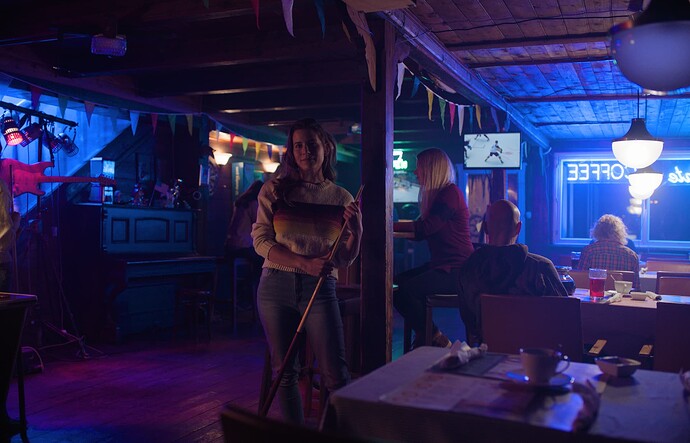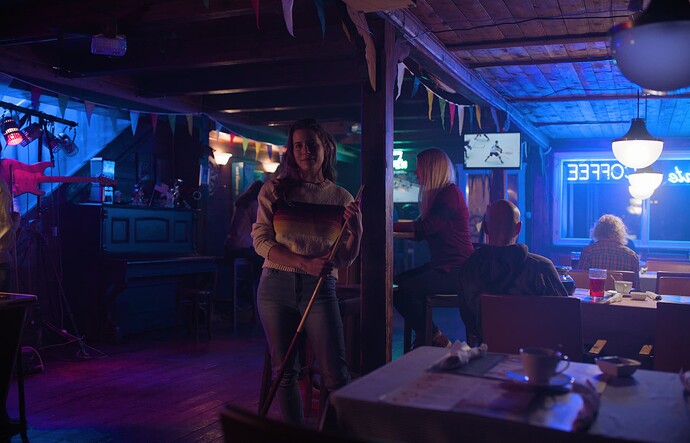ARRI Reveal looks great, but it also has a look built in. Their colors match the old transforms really well, they seem to have a built in look for skin tones, and they do interesting stuff in shadows. CAM DRT has more saturated reds and probably overall a bit more saturated look out of the box. If people prefer less saturated look for CAM DRT that is an easy adjustment to make. Personally I would lower the saturation a bit. The other things, like darker red, darker green, lighter blue, they can be done in LMT.
Here’s CAM DRT v035 with a simple LMT with HSV adjustment for blue hue and value:
And here’s CAM DRT v034 with the alternative compress mode and an LMT for the blue:
And ARRI Reveal:


